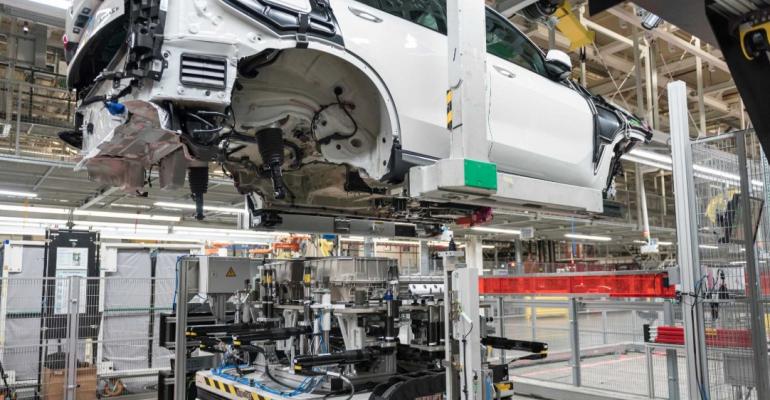BMW has expanded the battery assembly facilities at its Spartanburg manufacturing plant in South Carolina in preparing for production of the new X5 xDrive45e and X3 xDrive30e.
The new plug-in hybrid SUVs are planned to be sold alongside existing gasoline-only versions of the U.S.-built X5 and X3; the former is planned to start production Aug. 1 while the latter launches in December.
Both the X5 xDrive45e and X3 xDrive30e will provide all-electric capability for limited distances.
BMW says it is investing $10 million to double the size of the battery assembly facilities at its Spartanburg plant.
No specific details of BMW’s latest hybrid models have yet been revealed. However, the X5 xDrive45e is claimed to share the same driveline as that used by the 745e, adding all-wheel drive capability.
The 745e uses a turbocharged 3.0L inline 6-cyl. gasoline engine with 282 hp and a gearbox-mounted electric motor developing 112 hp for a combined system output of 388 hp and 442 lb.-ft. (600 Nm) of torque.
BMW’s most powerful hybrid driveline is combined with a 12-kWh lithium-ion battery, giving the rear-wheel-drive 745e a claimed electric range of up to 36 miles (58 km) on the WLTP cycle.
The X3 xDrive30e reportedly uses the same driveline as the recently introduced 330e, again with all-wheel drive.
It combines a turbocharged 2.0L gasoline 4-cyl. developing 181 hp with a gearbox-mounted electric motor delivering 112 hp. Total system output is rated at 288 hp, with peak torque rated at 310 lb.-ft. (420 Nm).
In combination with the Li-ion battery, the new hybrid system is claimed to provide the rear-wheel-drive 330e with an all-electric range of up to 41 miles (66 km).
The launch of the X3 xDrive30e and X5 xDrive45e form part of the German automaker’s efforts to meet strict new European Union-mandated CO2 emission regulations, which call for a fleet average of 95 g/km by 2021.





